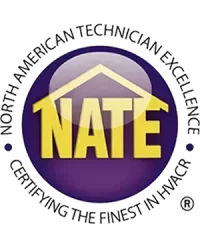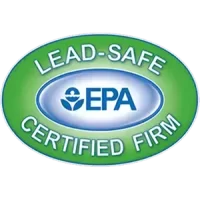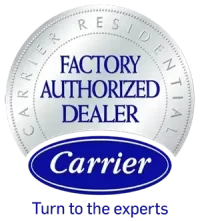Understanding When Your Westchester Home Needs Furnace Replacement
Furnace replacement becomes necessary when your heating system reaches a point where repairs no longer make financial sense or when the unit cannot maintain comfortable temperatures throughout your home. In Westchester, IL, where winter temperatures regularly drop below freezing and heating demands remain high from November through March, a failing furnace creates more than just discomfort—it poses genuine risks to your family’s wellbeing and your home’s infrastructure. Most furnaces last between 15 to 20 years with proper maintenance, though factors like usage patterns, maintenance history, and initial installation quality significantly impact this timeframe.
At Energy Services Air Conditioning and Heating Company, we evaluate multiple indicators when determining whether replacement makes more sense than continued repairs. Rising energy bills despite consistent usage patterns often signal declining efficiency, as older furnaces work harder to produce the same amount of heat. Strange noises like banging, rattling, or squealing indicate mechanical components nearing failure, while uneven heating throughout different rooms suggests the system can no longer distribute warm air effectively. Yellow pilot flames instead of blue ones warn of potential carbon monoxide risks, making immediate replacement critical for safety.
Modern Furnace Technology and Efficiency Standards
Today’s furnace technology has advanced considerably beyond what was available even a decade ago. Annual Fuel Utilization Efficiency (AFUE) ratings now reach up to 98.5% in premium models, meaning nearly all fuel consumed converts directly into usable heat for your home. Compare this to older units from the 1990s that typically operated at 60-70% efficiency, and the potential savings become clear. For an average Westchester home spending $1,500 annually on heating with a 70% efficient furnace, upgrading to a 95% efficient model could reduce costs by approximately $530 per year.
Variable-speed blowers represent another significant advancement, automatically adjusting airflow based on heating demands rather than operating at full capacity constantly. This technology not only reduces energy consumption by up to 40% compared to single-speed motors but also eliminates the temperature swings common with older on-off systems. Two-stage and modulating gas valves further enhance comfort and efficiency by allowing furnaces to operate at lower capacities during mild weather, running longer cycles at reduced output rather than short, intense bursts that waste energy and create uncomfortable temperature variations.
Selecting the Right Furnace Size and Type for Westchester Homes
Proper sizing remains crucial for optimal furnace performance and longevity. An oversized unit cycles on and off frequently, creating temperature fluctuations, increasing wear on components, and raising humidity levels that promote mold growth. Undersized systems run continuously without adequately heating your home, driving up energy costs while failing to maintain comfort. We calculate heating requirements using Manual J load calculations, considering your home’s square footage, insulation levels, window efficiency, and air infiltration rates to determine the exact BTU capacity needed.
Westchester homes typically require between 80,000 to 120,000 BTU furnaces, depending on construction age and insulation quality. Ranch-style homes common in older Westchester neighborhoods often need different heating solutions than newer two-story constructions with open floor plans. We also evaluate existing ductwork conditions, as improperly sized or leaking ducts can reduce system efficiency by up to 30%. Sometimes ductwork modifications or sealing becomes necessary during replacement to ensure your new furnace operates at peak performance.
The Professional Installation Process
Professional furnace replacement involves considerably more than simply swapping old equipment for new. We begin by disconnecting and safely removing your existing furnace, including proper disposal according to environmental regulations. The installation area requires thorough cleaning and inspection, checking for gas leaks, evaluating electrical connections, and ensuring adequate combustion air supply. Modern furnaces often have different dimensional requirements than older models, sometimes necessitating modifications to plenums, return air drops, or supply connections.
Gas line sizing verification ensures adequate fuel supply for your new furnace’s BTU requirements. Older homes might need gas line upgrades, particularly when replacing low-efficiency units with high-efficiency models that require different gas pressures. Electrical systems also require evaluation, as variable-speed motors and advanced control boards need consistent power supply and proper grounding. We install new thermostats when necessary, with programmable and smart models offering additional energy savings through customized scheduling and remote access capabilities. Venting system modifications become essential when upgrading to high-efficiency condensing furnaces, which require PVC venting rather than traditional metal flues.
Investment Considerations and Long-Term Value
Furnace replacement represents a significant investment, with costs in Westchester typically ranging from $3,500 to $8,000 depending on efficiency ratings, capacity requirements, and installation complexity. However, viewing this expense through a long-term lens reveals substantial value. Energy savings alone can offset much of the initial cost over the furnace’s lifetime, while improved comfort and reliability eliminate the stress and expense of emergency repairs during harsh winter conditions.
- Federal tax credits currently offer up to $600 for qualifying high-efficiency models meeting Energy Star requirements
- Utility rebates from ComEd and Nicor Gas provide additional savings ranging from $200 to $1,000 based on efficiency improvements
- Manufacturer promotions often include extended warranties or discounted maintenance plans during peak replacement seasons
- Financing options allow spreading costs over time while immediately enjoying energy savings and improved comfort
We’re proud to provide the best in HVAC and indoor air quality services to residential customers throughout Chicago and the surrounding communities, helping homeowners make informed decisions about these important investments.
Post-Installation Support and Maintenance Planning
Following installation, proper maintenance ensures your new furnace achieves its expected lifespan while maintaining peak efficiency. We provide comprehensive system orientation, explaining thermostat operation, filter replacement schedules, and warning signs requiring professional attention. Annual professional maintenance catches minor issues before they become major problems, maintaining warranty coverage while optimizing performance. Whether you need to find the right HVAC system for a new home or want to have maintenance completed on your current system, you can count on us to provide ongoing support throughout your furnace’s operational life.
Regular filter changes every one to three months prevent airflow restrictions that force your furnace to work harder, increasing energy consumption and component wear. Keeping vents and returns unobstructed ensures proper air circulation, while maintaining consistent thermostat settings reduces system cycling. We recommend annual combustion analysis and safety inspections, particularly important for detecting carbon monoxide risks before they threaten your family’s health. These preventive measures typically cost less than $200 annually while potentially preventing thousands in premature replacement costs.










